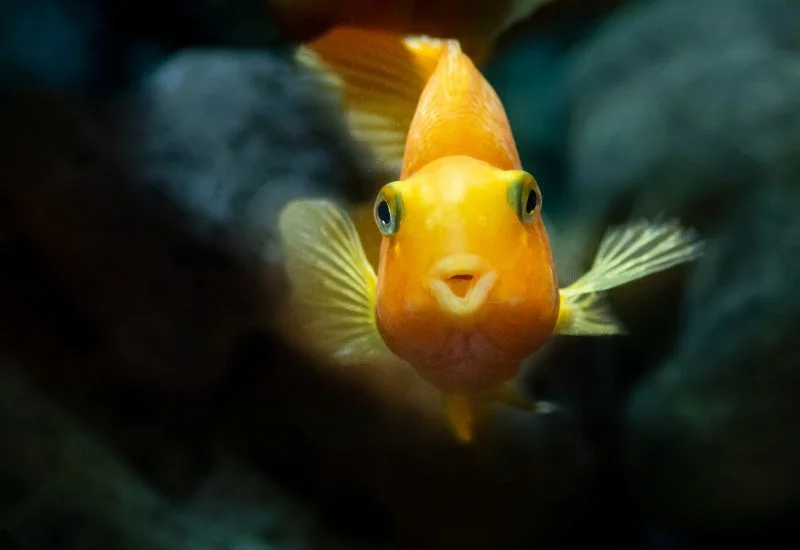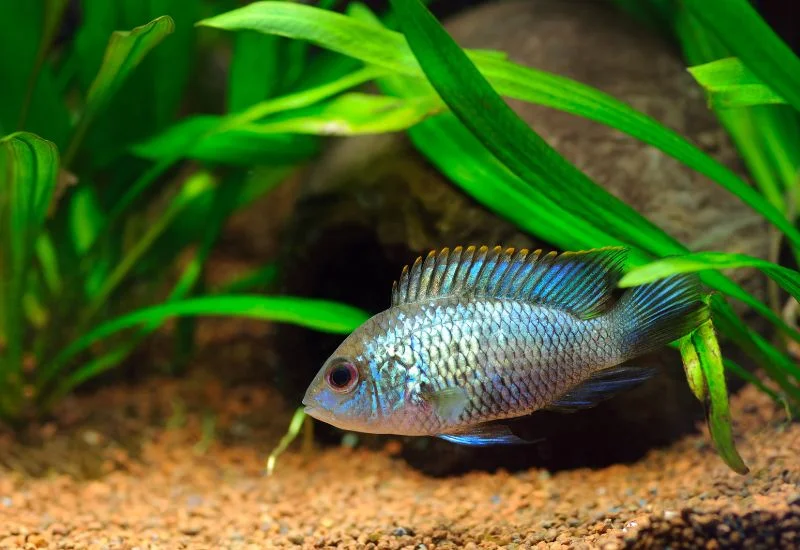Freshwater aquarium diseases can occur due to poor water quality, overfeeding, or crowded tanks. These issues put fish under stress, and the disease is a reflection of that stress.
If proper care is not provided, several diseases can occur, such as fin, eye, and fungal infections.
Due to poor water quality, other factors can occur, like the growth of fungi, bacteria, and viruses. With proper care, monitoring, and medication, all health problems can be prevented. Learn about common fish diseases and how to keep your fish healthy.
Here are some common diseases of fish.
Types of diseases

Ichthyophthirius Multifiliis disease (ICK)
Ichthyophthirius Multifiliis, commonly pronounced as ICK, is a common disease caused by parasites in the aquarium. Affected fish can be traced by their behavior.
Causes
- Poor water quality
- Crowded aquarium
- Sudden change in water
- Adding infected fish
- Rapid breathing
Diagnose
The disease causes white spots on the fish’s skin. These parasites cause space in the skin, which looks like dots or grains. Over time, the spots can be seen with the eye.
Treatment
Here are some different treatments that an aquarist can do:
- Use a new aquarium as an ICK-free environment. Make sure the temperature is appropriate for the fish. See the instructions for the gallonage capacity of the aquarium. Change 20% of the water to eliminate parasites if the process is needed again.
- The other method is to raise the temperature to 85°F and maintain it for two weeks. Do not raise the temperature more. Only increase it by one or two degrees per day. Watch the fish closely for any stress in the behavior, and then return the temperature to normal.
- The other method is the use of aquarium salt. Some species are resistant to salt. Before using it, make sure you know what species you have and act accordingly.
Bacterial Infection
This infection is also known as fin rot or tail rot. Bacterial infection is the most common disease. The bacteria normally follow the invasion of injury by parasites.
Causes
- Poor diet
- Poor quality of water
- change in water temperature
- Poor handling of fish
Diagnose
The symptoms are similar to ICK. The level of breathing increased. Symptoms include white spots on the skin and fins, cloudy eyes, bloody patches on the skin, and open sores on the body or mouth of the fish.
Treatment
Use recommended antibacterial medication for your fish. The medicines are less effective in water. For better results, inject it with food.
Fungs

This is less common but still appears in aquariums. It is also known as mycoses. This causes furry growth on the fish, which can be internal.
Causes
- Infected food
- Injury
- Poor water quality
- Dead fish
Diagnose
Fish infected with fungi exhibit white to brown patches on their skin, eyes, fins, pale gills, and changes in appetite.
Treatment
Use antibiotics for fungal infections. Put your fish in quarantine and salt the water. Other factors, such as water quality, environment, diet, and overstocking, can be addressed to solve the issue of fungi.
Dropsy
Dropsy is also known as “pinecone disease.” It can be caused by a bacterial infection in the fish’s kidneys, which swells the fish’s abdominal area. The swelling makes the fish’s skin look like pinecones. There can be many other causes of these diseases.
Causes
- Change in water temperature
- Dominant tank mates
- Poor handling of transportation
Diagnose
- Swelling on abdomen
- Appearance like pinecone
- Extended scales
Treatment
Put infected fish into a separate tank, ensure the water temperature is 70 to 75 F, and give your fish a salt bath. This disease can be treated with antibacterial medication.
Brooklynellosis
This disease is also called Brooklynella hostilis. This disease mostly affects anemonefish but can also cause distress to other fish.
Causes
- Entry of infected fish
- Stress in fish
- Poor handling
Diagnose
- Removal of tissues in the skin
- Loss of appetite
- Changing in the color of the skin
- Respiratory distress
- Abnormal breathing
Treatment
This disease can be treated with 37% formalin, formaldehyde gas, water, and a methanol solution. For the best result, formalin should be used as a bath. Use 0.5 g of formalin per gallon of water.
Rust or Gold Dust Disease
This disease, called velvet disease, is caused by a parasite called Odinium. It attacks the gills and skin of fish and can also cause secondary bacterial infection.
Causes
- Dirty tanks
- Poor water quality
- Fluctuation in water temperature
Diagnose
The fish’s color turns yellowish, or its skin can be peeled off. Fish can also gasp for air, breathe heavily, and rub against the aquarium.
Treatment
Carbon in the filter can change the water of the aquarium. Copper can be used, but it’s not good for all species. Before using it, make sure it is suitable for your fish. You can try to raise the water temperature to 86°F, but it will kill the Odinium. The rise in water temperature can decrease the oxygen level. Watch your fish closely if the fish goes under stress and bring the temperature back to normal.
Fish Lice
Fish lice is a disease related to parasites, also known as parasitic crustaceans. These parasites have four legs. Have a thin needle like a sucker to get attached to fish. These parasites can be seen easily by close monitoring.
Causes
- Add an outdoor fish to the aquarium.
- Leave fish in the pond and then bring it back into the aquarium.
Diagnose
These parasites can be seen on the fish’s skin, causing spots and itching. They are deadly, as they can lead to other infections. This disease can cause bacterial and fungal infections.
Treatment
These parasites can be removed by hand using tweezers. Before doing so, make sure to sensitize the aquarium to kill any eggs.
Care of fish

To save your fish from disease, it is important to know their regular behavior. Watch your fish closely and feed them in a timely manner to learn how they behave normally. Many reasons can lead to several diseases, including poor water quality, overflowing fish tanks, poor diet, aggression from dominant fish, and more.
Try to change the water in the tank regularly, make sure the tank filter is working, give your fish a quality diet, and put the light over the aquarium to form a cycle of day and night.
Prevention

Do not purchase a new fish that has just arrived in the store. The new fish is normally in stress, and its immune system will be low. Moving them again can be more stressful for them. When you buy a new fish, put it into a separate tank to reduce the stress level. Make sure the water pH is normal for fish. Keep that fish in the tank for a few days to see if it’s healthy and has no diseases.
Use Ultraviolet Sterilizers in the water. These sterilizers will kill any organism and algae and will make water clear. Keep the number of fish in the aquarium as it can cause stress.
Conclusion
There can be many reasons for freshwater disease. Know the behavior of fish to notice if there is any change. The main factors that contribute to diseases are poor quality of water, crowded tanks, infected food, environmental stress, the entry of new fish, and many more.
Take precautions to keep your fish healthy. Change the tank water, check the pH level, install the filter, place plants for a better environment, give a healthy diet, and don’t stuff your tank with fish.
